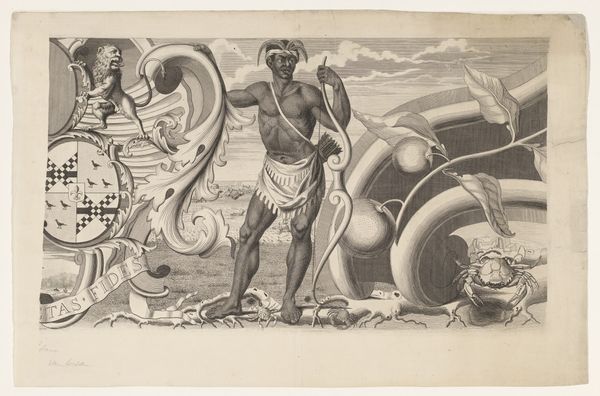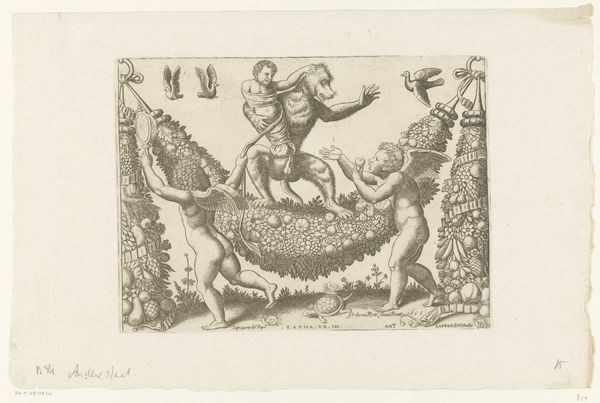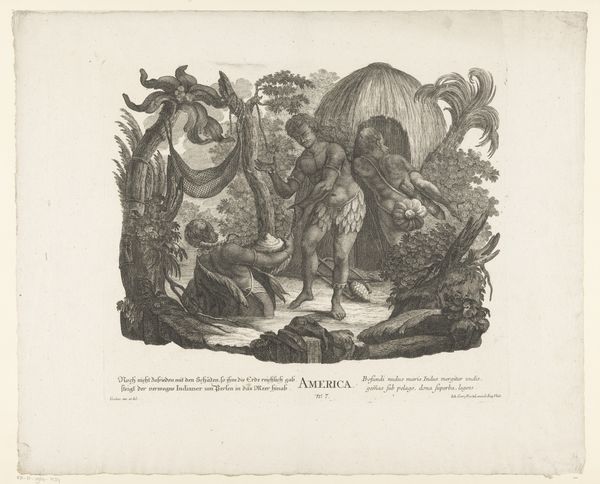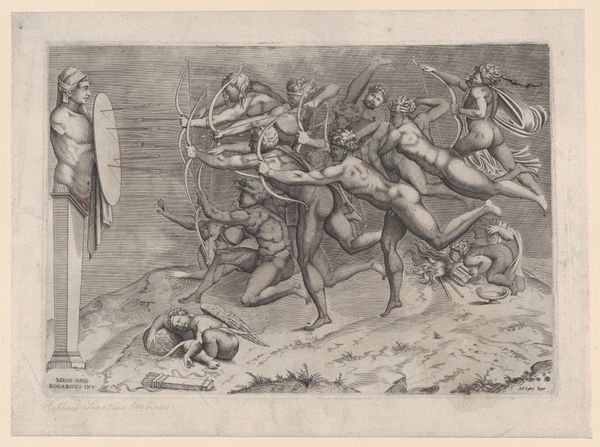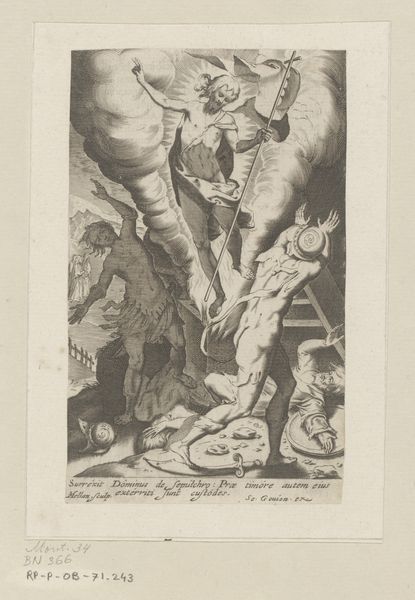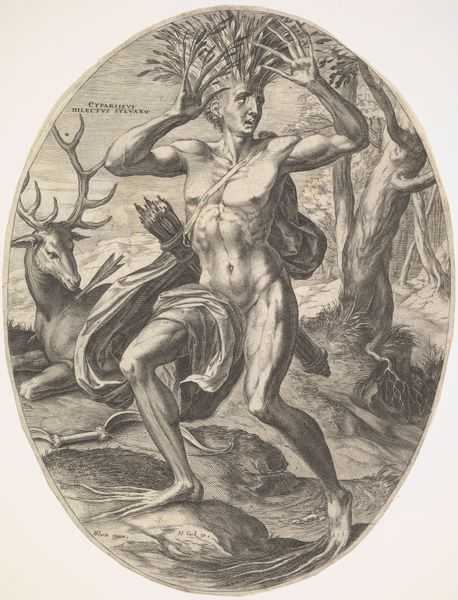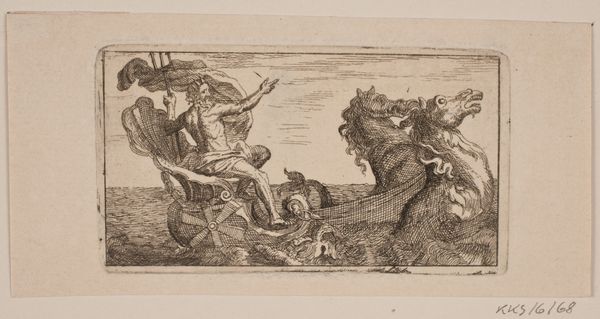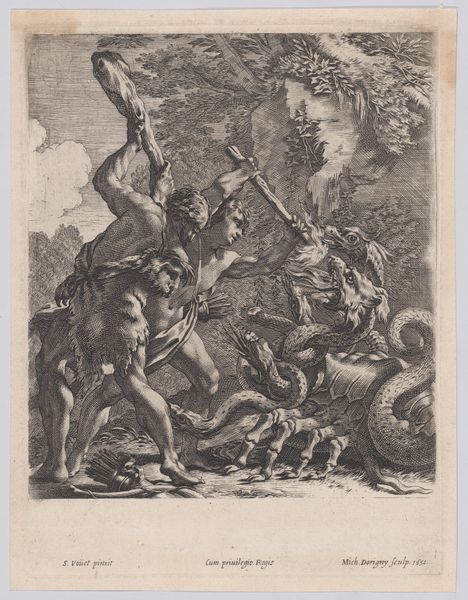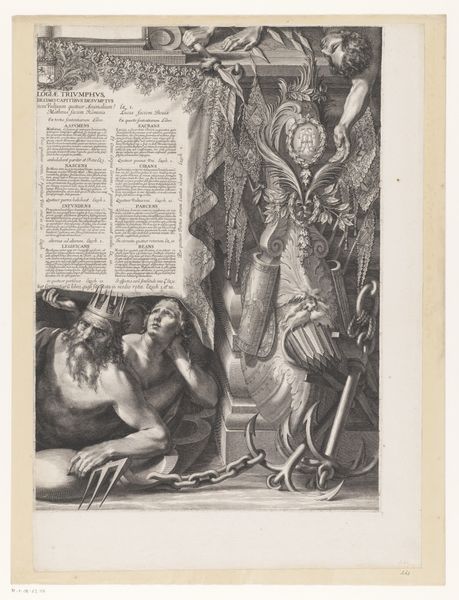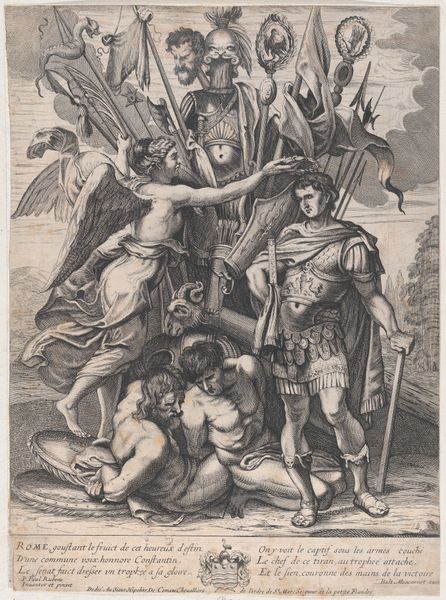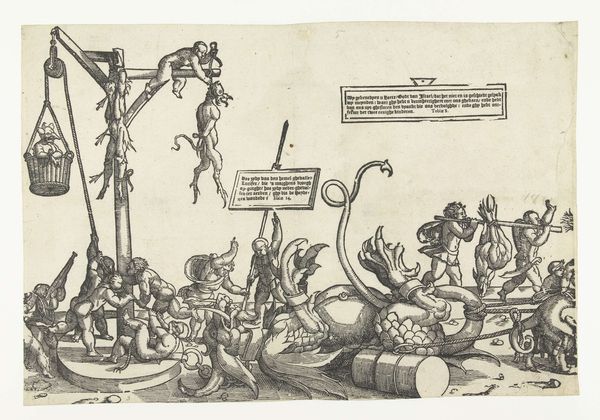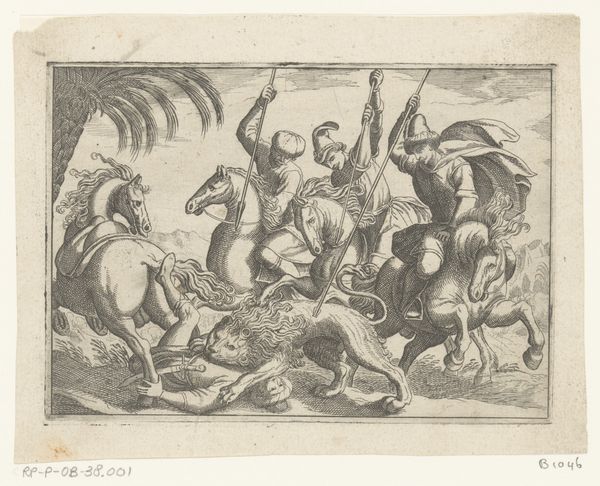
print, engraving
#
allegory
# print
#
engraving
Dimensions: height 450 mm, width 660 mm
Copyright: Rijks Museum: Open Domain
Editor: This engraving from 1737, “Part of the Edge of a Map of Suriname (left part)” by J.G. de la Croix, is incredibly detailed. It has this allegorical figure holding a bird, along with nautical symbols and even what appears to be a coat of arms. How would you interpret this piece, looking at the ways it was produced? Curator: Well, consider the very material conditions. This is an engraving, a print. What does that signify? Mass production, relative accessibility, dissemination of information. It’s not some unique, handcrafted object only for the elite. What are your thoughts on that? Editor: That makes sense, it's meant to inform and maybe even persuade a wider audience about Suriname. The use of symbols from both cultures—European emblems and indigenous figures—suggests an attempt to reconcile them. Curator: Precisely! It’s not just reconciliation; it's also about control, power dynamics encoded in material form. The printing process itself, dependent on specialized labor, presses, imported paper, represents the expansion of European capitalism. And how is that embodied in this image? Editor: In the juxtaposition of the native figure with those emblems of European power and trade, maybe? He’s both romanticized and simultaneously situated within this framework of colonial ambition. Curator: The indigenous figure becomes a commodity, printed and distributed, furthering the colonial project. It challenges this rigid binary between high art and functional cartography, using images as a commodity and a tool of governance. Look at the materials – the ink, the paper – all contributing to this narrative of consumption and control. Editor: I hadn't considered it in terms of production and the larger colonial system. Curator: Art isn’t divorced from these material realities. Everything, from the artist’s labor to the distribution of the print, speaks volumes about the socio-economic landscape of the time. Editor: Thank you, that's given me a new perspective. Curator: I hope it encourages you to consider the ‘how’ and the ‘why’ as much as the ‘what’ when analyzing art.
Comments
No comments
Be the first to comment and join the conversation on the ultimate creative platform.
